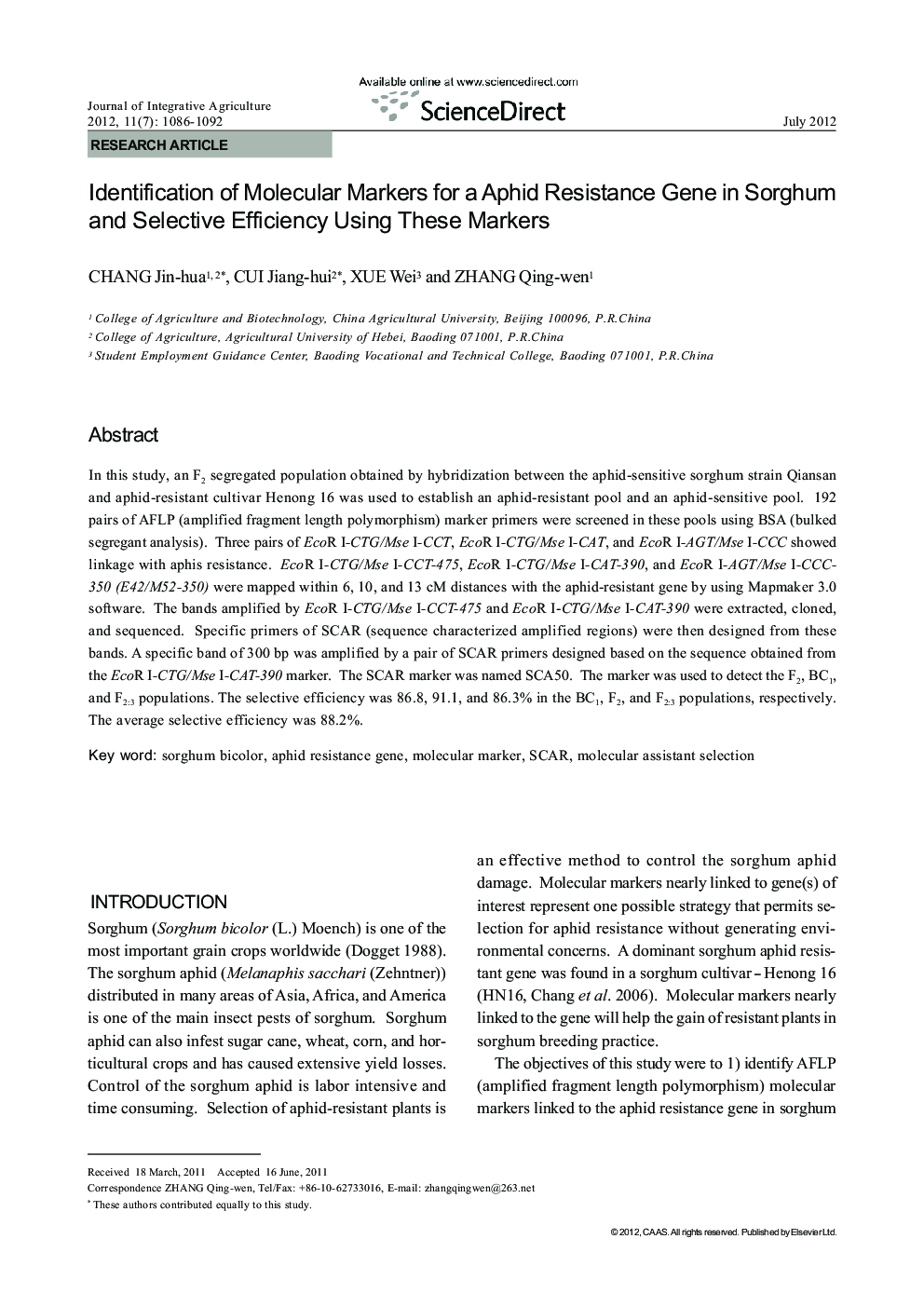| Article ID | Journal | Published Year | Pages | File Type |
|---|---|---|---|---|
| 4495119 | Journal of Integrative Agriculture | 2012 | 7 Pages |
In this study, an F2 segregated population obtained by hybridization between the aphid-sensitive sorghum strain Qiansan and aphid-resistant cultivar Henong 16 was used to establish an aphid-resistant pool and an aphid-sensitive pool. 192 pairs of AFLP (amplified fragment length polymorphism) marker primers were screened in these pools using BSA (bulked segregant analysis). Three pairs of -EcoR I-CTG/Mse I-CCT, -EcoR I-CTG/Mse I-CAT, and -EcoR I-AGT/Mse I-CCC showed linkage with aphis resistance. -EcoR I-CTG/Mse I-CCT-475, -EcoR I-CTG/Mse I-CAT-390, and -EcoR I-AGT/Mse I-CCC-350 (E42/M52-350) were mapped within 6, 10, and 13 cM distances with the aphid-resistant gene by using Mapmaker 3.0 software. The bands amplified by -EcoR I-CTG/Mse I-CCT-475 and -EcoR I-CTG/Mse I-CAT-390 were extracted, cloned, and sequenced. Specific primers of SCAR (sequence characterized amplified regions) were then designed from these bands. A specific band of 300 bp was amplified by a pair of SCAR primers designed based on the sequence obtained from the -EcoR I-CTG/Mse I-CAT-390 marker. The SCAR marker was named SCA50. The marker was used to detect the F2, BC1, and F2:3 populations. The selective efficiency was 86.8, 91.1, and 86.3% in the BC1, F2, and F2:3 populations, respectively. The average selective efficiency was 88.2%.
